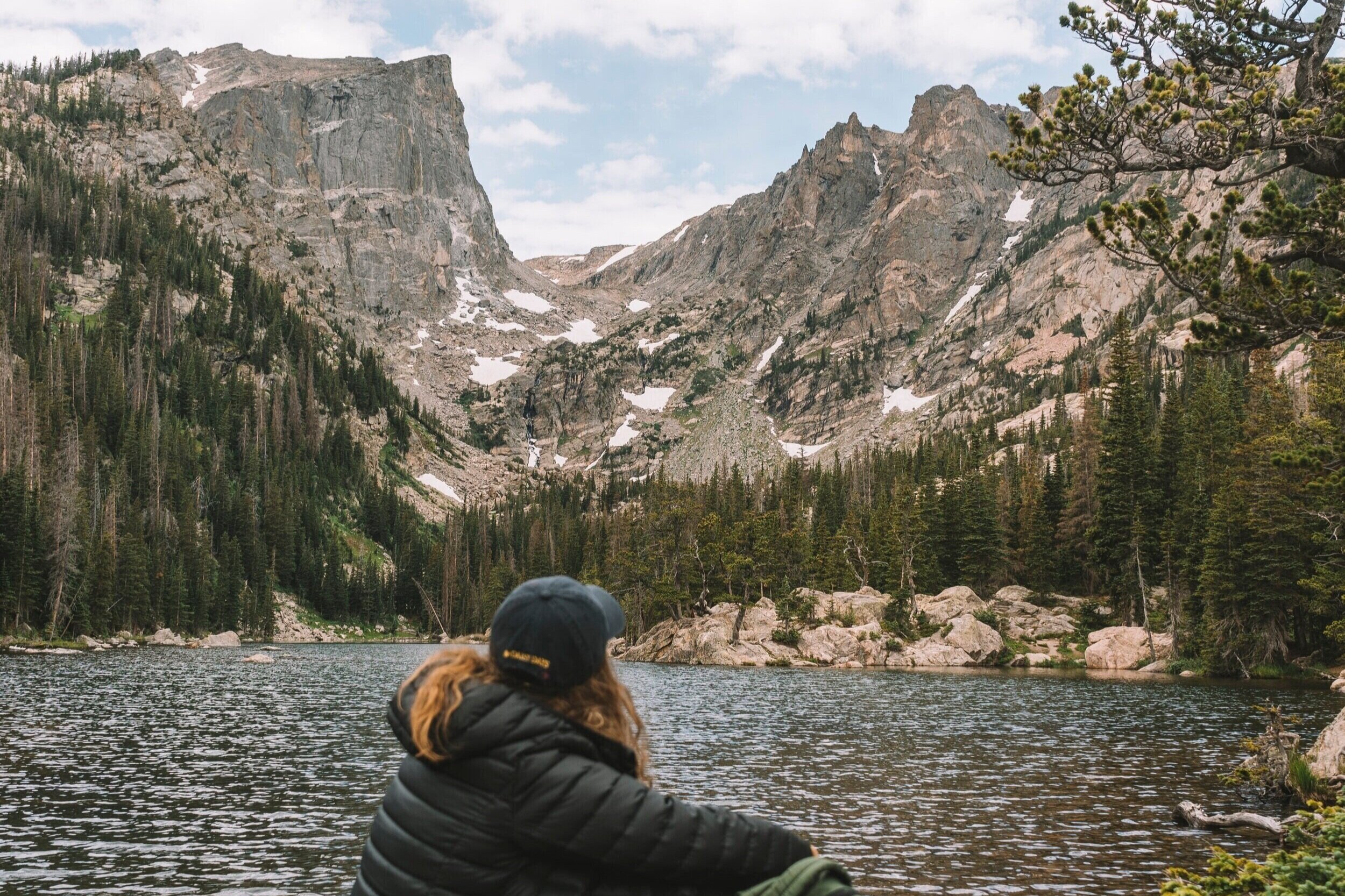48 Hours in Rocky Mountain National Park, Colorado
A visit to Rocky Mountain National Park is high on a lot of bucket lists across the country, and it’s easy to see why. This Colorado wonderland is home to seemingly endless alpine peaks, mountain streams, and vibrant blue lakes.
We’ve spent many a weekend in this park, and have complied our best itinerary to both get a feel for the park, and see some of the most notable sites for those who only have a few days. Keep in mind that this itinerary was designed for those who love long hikes and rustic camping on summer and fall adventures – many roads and trails are closed in the winter, making this route impossible once there is snow on the ground.
**For the sake of this itinerary, we are going to assume that sunrise is at 6am everyday, and sunset is at 8:30pm (about what it typically is around Memorial Day in this part of Colorado).
Day 1
7:00 pm: You spent the first part of today traveling, and about an hour before sunset you finally drive into Grand Lake, Colorado. From the banks of the lake, you can see the towering mountains that make up the border of Rocky Mountain National Park as you spend the last minutes of daylight setting up your campsite and starting a fire. A few free camping suggestions within Bureau of Land Management areas are below. There are no amenities and no running water, but camping in the “wild” Colorado forest is an unreal experience.
Stillwater Pass BLM Land: 40°12'53.4"N 105°53'09.2"W
Meadow Creek Reservoir BLM Land: 40°03'04.8"N 105°44'07.6"W
If you arrive in Grand Lake early enough to squeeze in an activity, kayaking on the cold mountain waters is a must-do.
HINT: Be sure to stay up and admire the millions of twinkling stars that put on a show each night in the Colorado sky.
Day 2
5:00 am: Wake up before dawn and head right into Rocky Mountain National Park for sunrise. Drive up Trail Ridge Road, and try to get above tree line for a stunning alpine sunrise at one of the many pull offs along the road. Brewing coffee and munching on granola bars in the alpine tundra is the perfect way to start the day.
6:30 am: After spending ample time snapping pictures and enjoying breakfast, head over to the Ute Trail to enjoy an easy alpine hike in the morning light. The route is 5.6 miles out-and-back, but hiker’s can travel as far as they’d like before turning around.
Campsite at Stillwater Pass
Sunrise along Trail Ridge Road
10:00 am: Next, drive back under treeline to the Bear Lake Trailhead. From there, hike up to Emerald and Haiyaha Lakes – you will also see Bear Lake, Nymph Lake, and Dream Lake on the trail.
4:00 pm: After a full day of hiking, it’s time to start thinking about making camp. The dispersed camping options outside of Estes Park are lacking, but the multiple campgrounds within the park offer a great alternative for a small fee. The closest national park campgrounds to the Bear Lake area are below, as well as a few options that are a little bit off the route of this itinerary. May of these campgrounds will require a reservation to be made a few months in advanced, but the park does also offer first-come-first-serve options for last minute planners:
Aspenglen Campground: 40°24'00.7"N 105°35'32.6"W
Glacier Basin Campground: 40°19'43.2"N 105°35'44.9"W
Moraine Park Campground: 40°21'35.9"N 105°36'16.8"W
Campgrounds further away from the suggested itinerary’s route:
Longs Peak Campground (first-come-first-serve): 40°16'29.9"N 105°33'31.4"W
Timber Creek Campground (first-come-first-serve): 40°22'45.0"N 105°51'10.6"W
6:00pm: After setting up camp, either drive into Estes Park for dinner and souvenirs, or make a campfire dinner at your site.
Lake Haiyaha
Snack break at Dream Lake
Day 3
11:00 am: After sleeping in a little bit, head out towards the Sky Pond Trail in Glacier Basin. This is an challenging hike that is almost 10-miles, and will take most people the better part of a day.
7:00 pm: Once getting back to the trailhead, you’ll have two options. You can either head back up towards Trail Ridge Road for sunset, or head into Estes Park and on your way back home.
Sky Pond & Lake of Glass
Along the Emerald Lake Trail








